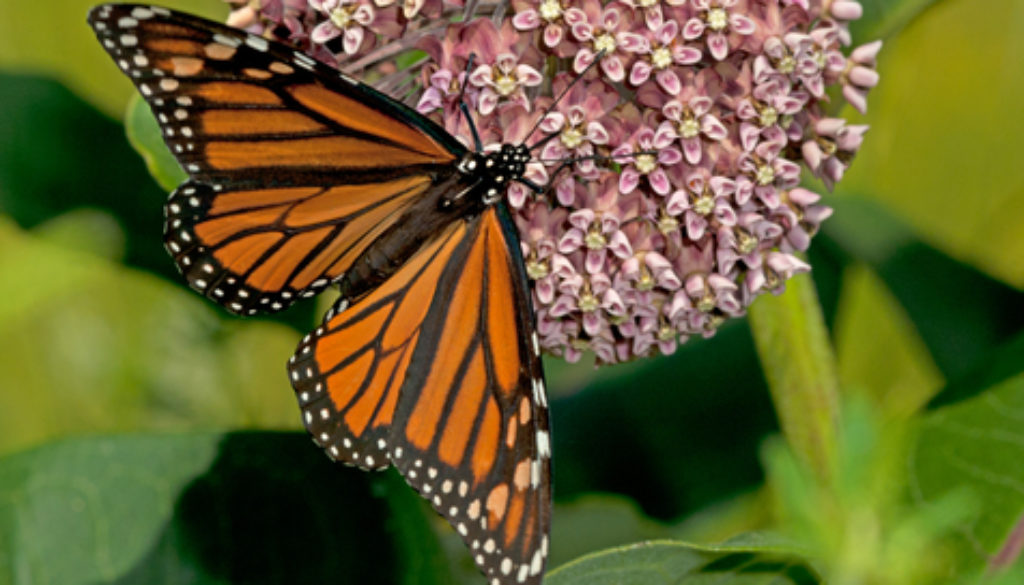Report: Monarchs, Other Species Endangered by Pesticides
By Sylvia Fallon, Natural Resources Defense Council
Each year, the Endangered Species Coalition highlights ten species that are facing a particular kind of threat. This year that threat is pesticides. From frogs to owls to whales to bats, pesticides endanger species across the globe.
This year’s report features the monarch butterfly, threatened by the widespread use of the herbicide glyphosate, commonly known as Round Up. How does a plant-killing herbicide affect a butterfly? Because it decimates milkweed, the only plant on which monarchs lay their eggs and on which monarch caterpillars feed.
Milkweed used to be found scattered throughout the agricultural Midwest in native prairies as well as in corn and soy fields—with monarchs actually often laying more eggs on milkweeds in farm fields. However, in the late 90s, agribusiness companies like Monsanto began genetically engineering crops to withstand the application of glyphosate, an herbicide that Monsanto also produced. These “herbicide tolerant” genes allowed farmers to spray glyphosate in their fields without harming their crops.
The result? Glyphosate use skyrocketed, virtually eliminating milkweed from agricultural fields across the Midwest—a key area to the monarch butterfly’s annual migration. With the loss of milkweed, the monarch population began a steep decline – dropping over 80% in the last 20 years. The monarch butterfly is now being considered for protection under the Endangered Species Act.
In the past couple of years, there have been extensive efforts to plant more milkweed, but some research has shown that milkweed close to agricultural fields may become contaminated with neonicotinoids or “neonics,” a class of insecticides that threatens bees and other pollinators. New research shows neonic contaminated milkweed may also be harming the development of monarch butterflies.
Additionally, glyphosate has begun to lose its effectiveness, since the overuse of glyphosate has led to some weeds to develop resistance. However, rather than recognizing the evolutionary flaw of genetically modified herbicide tolerant crops, agribusiness’ response is simply to genetically engineer crops to withstand multiple herbicides—such as Dow Chemical’s Enlist Duo (now owned by Corteva) which is a combination of glyphosate and 2-4D—leading to even more toxic chemicals being applied to our farmland.
The end product is a thoroughly poisoned landscape—agrichemical companies pretreat corn or soy seed with insecticides and encourage saturating the ground around it with herbicides. And while they profit, farmers pay higher costs to use more pesticides, creating huge swaths of poisonous land. Our monarch butterflies, our bees, our birds and many other beneficial wildlife are caught in the crosshairs, because the pesticides used effectively kill any insect or weed whether it is a pest or not.
There are solutions to this problem. Integrated pest management—in which farmers implement a cadre of non-chemical tools such as diversified crop rotations and cover crops—helps break up pest cycles, thereby greatly reducing the need for pesticides. These practices also provide immense benefits by regenerating soil— making it more productive and nutrient rich. We need to break the cycle of dependence on pesticides and invest in solutions that will benefit everyone: farmers, consumers, monarch butterflies, and the natural systems upon which we all depend.

